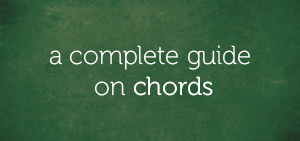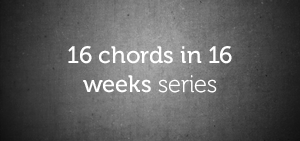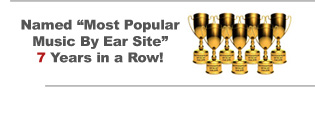If you fear that you spell certain scales incorrectly – scales like:
- C# major scale
- F# major scale
- Gb major scale
…then this lesson is for you.
Spelling is very important in music because you can get away with the wrong spelling of a scale while playing by the ear, however, there are certain scholarly situations proper spelling is required.
Suggested reading: The three guidelines to the proper spelling of scales.
That’s why I want to show you the appropriate spelling of these three major scales that musicians spell wrongly. There are lots more, but I hope that after I must have shown you these three, you will be able to spell others correctly.
Before we get into this study, permit me to give you a background on the major scale.
A Short Note On The Major Scale
The major scale is the traditional scale of the major key. Consequently, every major key has its major scale.
One of the easiest major scale to play on the keyboard is the C major scale:
…which consists of all white notes from C:
…to its octave (C):
50% of the scale step intervals formed by the major scale are major intervals.
“Let’s check them out…”
C to D:
…is a major second.
C to E:
….is a major third.
C to A:
…is a major sixth.
C to B:
…is a major seventh.
Believe it or not, the several major intervals within the scale contributes to its major quality. However, from a scholarly standpoint, a scale is considered as a major or minor scale because of the interval between its first and third tones.
It is the major third interval between the first and third tones of the C major scale:
…which are C and E:
…that gives the C major scale its major quality.
That’s the much we can cover on the major scale, before we proceed in this study, here are the major scale in all twelve keys…
C major scale:
Db major scale:
D major scale:
Eb major scale:
E major scale:
F major scale:
Gb major scale:
G major scale:
Ab major scale:
A major scale:
Bb major scale:
B major scale:
The Importance Of Spelling In Music
Spelling is simply a process of outlining the letters of a word.
The name “Jermaine” can be spelled J-E-R-M-A-I-N-E by outlining the letters that makes up the name. The same way words can be spelled, musical ideas can also be spelled; be it scales, intervals, chords, chord progressions – they all can be spelled.
The Spelling Of A Scale
The spelling of a scale gives an outline of the letter name of the note or writing out the letter names of a note that the scale contains.
To spell the C major scale:
…you’ll have to write out the letter name of the notes of the C major scale.
The spelling of the C major scale is C, D, E, F, G, A, B, and C.
Spelling is important to music scholars for a variety of reasons. For example, note that while playing the D major scale:
…the third and seventh tones are F# and C#:
…respectively
Although F#:
…and Gb:
…are enharmonically related, also, C#:
…and Db:
…are enharmonically related. However, you cannot substitute F#:
…with Gb:
…or C#:
…with Db:
If you do, here’s what you would derive:
….another spelling of the D major scale which is altogether wrong. This spelling is wrong because the third and seventh tones of the D major scale are neither Gb:
…nor Db:
If you put a Gb and Db:
…as the third and seventh tones of the D major scale, you will be going against the traditional guidelines for the proper spelling of scales.
Attention: There are a variety of guidelines that should not be violated while spelling scales. Let’s take a look at two of them that are relevant to this study.
#1 – No Letter Of The Alphabet Should Be Repeated
#2 – The Omission Of Any Letter Of The Alphabet Is Forbidden
There are seven letters of the alphabet that are used in naming of notes in music. Which are from A to G:
Repetition or omission of any of these letters is totally unacceptable while spelling traditional scales because all traditional scales must have the note of every letter of the alphabet from A to G. Therefore, in the case of an alternate spelling of the D major scale:
…where Gb:
…is the third tone of the scale, there’s a repetition of the ‘G’ letter name.
D, E, Gb, G, A, B, C, D
Notice that there’s a Gb:
…and also a G:
…and both notes are associated with G.
A closer look at the alternate spelling of the D major scale:
D, E, Gb, G, A, B, C, D
…shows the omission of F. Having two notes that are related to G which are Gb and G:
…creates the omission of the “F” letter name and this is totally against the traditional guidelines of spelling.
“Check this out…”
While playing by the ear, you can play a Gbmin7 chord as chord three in the key of D and it would certainly fit into the music. However, for scholarly reasons (believe me you wouldn’t know where you would be tomorrow or the situation you’ll find yourself in), appropriate spelling of your musical ideas are important.
Considering that our focus in this lesson is not on chords, let me show you three common major scales that musicians spell wrongly.
Common Major Scales That Musicians Spell Wrongly
There are several scales on the keyboard that musicians spell wrongly, and time will fail me to cover all of them in this lesson. However, I’ll do my best to show you these three basic scales and I believe that if you learn how to spell them properly, you’ll be able to identify other scales that are spelled wrongly and correct them.
“Let’s take these three examples…”
#1 Example – The C# Major Scale
Here’s the spelling of the Db major scale:
Db Eb F Gb Ab Bb C Db
So many musicians are familiar with the spelling of the Db major scale:
…and that’s because its pretty easy.
However, when it comes to the C# major scale, it’s a little bit difficult to get it, and this is because a vast majority of musicians are not familiar with E#:
….the enharmonic spelling of the F note. Heck, I belonged to this league before 2008 (read post here.)
The notes commonly known as F and C:
…occupy the same key note with E# and B#:
Above all, they sound alike when played; the difference is in their spelling.
So many musicians spell the C# major scale as C#, D#, F, F#, G#, A#, C, C#:
…and that’s wrong because of the repetition of F and the omission of E. Also, the repetition of C and the omission of B.
Pursuant to the proper guidelines, the proper spelling of the C# major scale is C#, D#, E#, F#, G#, A#, B#, and C:
#2 Example – The F# Major Scale
It is common to see most musicians spell the F# major scale as F#, G#, A#, B, C#, D#, F, and F#:
While this scale may sound like the F# major scale, there’s something wrong with the spelling.
The seventh tone of the F# major scale is rather an E# note:
…not an F:
Having F and F#:
…omits E and repeats F and just like I said earlier that would create an inappropriate spelling of the F# major scale.
The appropriate spelling of the F# major scale is F#, G#, A#, B, C#, D#, E#, and F#:
Take note that the seventh tone of the F# major scale is E#:
…and not F:
#3 Example – The Gb Major Scale
Our final example in this lesson is the Gb major scale, which is spelled as Gb, Ab, Bb, B, Db, Eb, F, and Gb:
…most of the time.
The repetition of B (Bb and B):
…and omission of C, makes this spelling wrong.
The appropriate spelling of the Gb major scale is Gb, Ab, Bb, Cb, Db, Eb, F, and Gb:
Take note that Cb:
…is the fourth tone of the Gb major scale:
…and not B:
Final Words
Now that you know the appropriate spelling of the major scale, do not – I repeat, do not go back to the wrong spelling, always use the right spelling.
For instance, a 7-3-6 chord progression in the key of C#:
…the root movement would be B#:
…E#:
…A#:
…that’s the right thing, and not C:
…F:
…Bb:
However, if you must use C and F:
…then you have to use it in the key of Db:
…where C and F:
…are the seventh and third tones of the scale.
I know that this issue of spelling doesn’t matter while playing but for scholarly reasons, you need to be familiar with the appropriate spelling of scales.
I’ll see you in another lesson.
Chuku Onyemachi
Latest posts by Chuku Onyemachi (see all)
- The Formation Of Diminished Seventh Chords Used To Be Challenging Until I Did This
- How To Form Seventh Chords In Two Shakes Of A Dog’s Tail Using Third Intervals And The Circle Of Fifths Chart
- I Played The 13sus4 Chord And This Happened…
- How To Build Seventh Chords Like An Architect Using “Foundation And Structure” Concept
- This 4-Week Plan Will Help You Master All The Major Scales







Comments on this entry are closed.